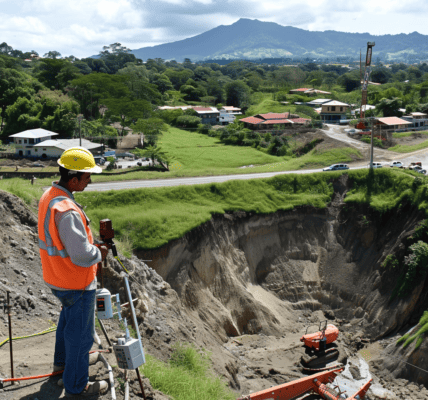Microscopic Fungi Enhance Soil Carbon Storage in Newly Formed Arctic Landscapes, Study Finds
Microscopic fungi have been found to enhance soil carbon storage in newly formed landscapes resulting from the shrinking of Arctic glaciers, according to a recent study conducted by researchers at Queen Mary University of London.
The study, led by Dr. James Bradley and researcher Juan Carlos Trejos-Espeleta, focused on the forefield of the Midtre Lovénbreen glacier in Svalbard, where melting Arctic glaciers are rapidly receding, allowing for the colonization of microscopic organisms in the exposed landscapes.
With approximately 10% of Earth’s land surface covered by glacial ice, the ongoing retreat of glaciers due to global warming is exposing new landscapes that have been under ice for thousands of years. As the glaciers melt away, microorganisms such as yeasts play a crucial role in soil formation in the newly accessible areas.
These newly formed soils serve as significant carbon stores under specific conditions, making the process of soil formation in post-glacial environments a topic of both scientific and societal interest.
To investigate the formation of Arctic soils, Dr. Bradley’s team traveled to Svalbard, an archipelago located above the Arctic Circle between the North Pole and Norway’s northern coast. The region is experiencing rapid climate warming, leading to the rapid decline of glaciers and the exposure of barren landscapes that offer minimal support for life due to nutrient-poor rocky terrain, freezing temperatures, and extended periods of darkness during the winter polar night.
The initial colonizers of these inhospitable terrains are microorganisms like bacteria and fungi, which play a crucial role in determining the carbon and nitrogen storage capacity of the soils. However, the exact mechanisms through which microbial activity stabilizes nutrients in these soils remain largely unknown.
Collaborating with researchers from Germany, the United States, and Switzerland, Dr. Bradley’s team published their findings in the journal Proceedings of the National Academy of Sciences (PNAS), shedding light on the intricate processes involved in soil formation following the retreat of glaciers in Arctic regions.





